Delay Doppelgänger.
DIG unearths the true soul of digital delay and doubles it — two simultaneous, integrated delays with captivating rack delay voicings from the 1980s and today, for incredible expressive potential.
Effortlessly create your own world of intricate and synchronized echoes, along with hypnotic and atmospheric repeats that blur the line between delay and reverb. Stretch your sonic horizons with five musically satisfying rhythmic subdivisions and three dual delay routing options. Go from syncopated, pulsating delay patterns, to evocative, spaced-out echo trails, all in a compact, pedalboard-friendly format.
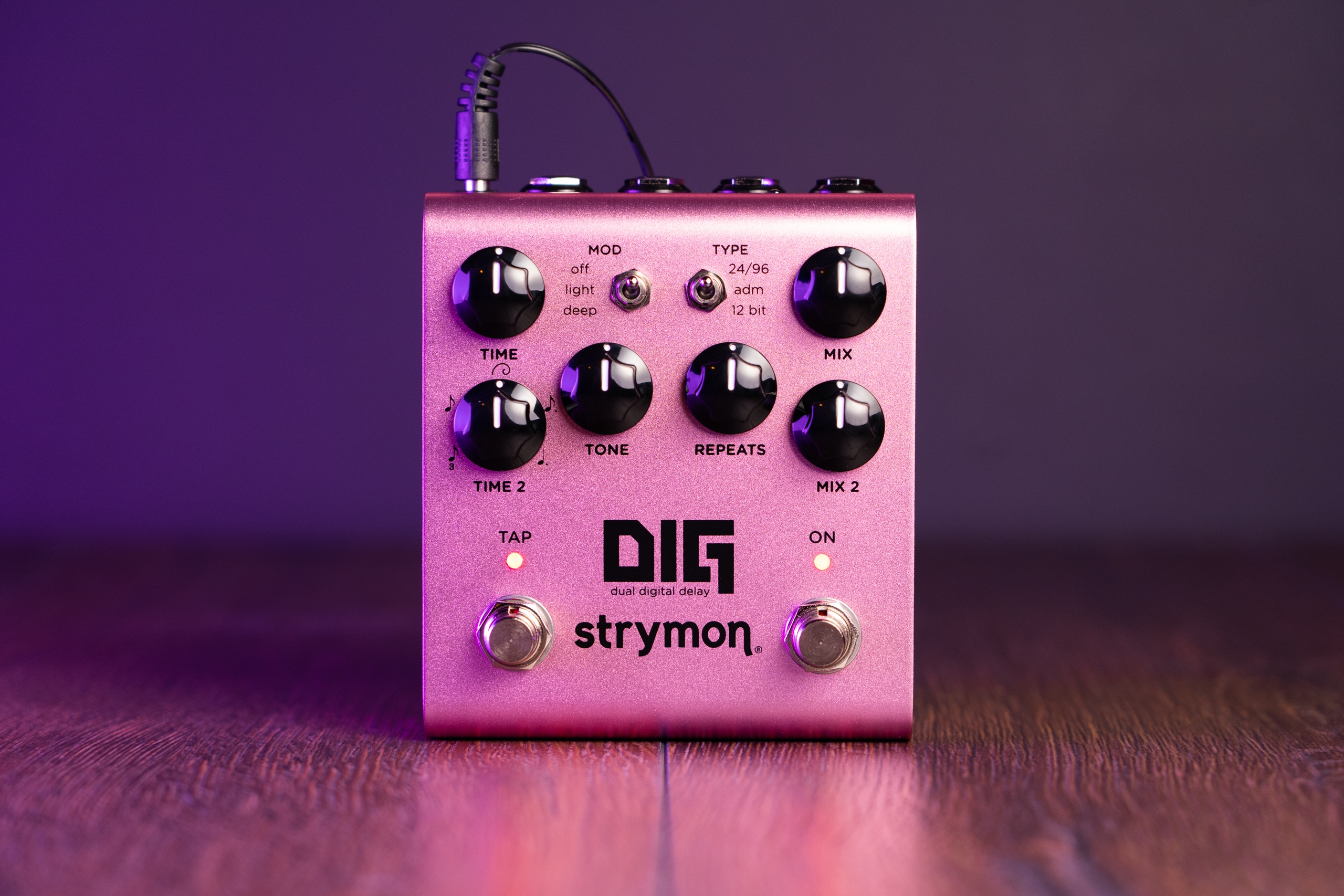
Rack To The Future.
Rack-mount digital delays of the ’80s ushered in a new era of audio effects. The innovative electronic designs generated the cleanest delays that had yet been heard, but also created their own special and intriguing sonic characteristics. Decades later, these sounds remain as distinctive and inspiring as ever.
Our thorough investigation of digital delay technology reveals the unique personalities that these delays possess. Delve into DIG’s three digital delay voicings: the early ’80s adaptive delta modulation mode, the mid-’80s 12 bit pulse code modulation mode, and the modern high-resolution 24/96 mode.
Multiply these distinct voicings by two and get DIG — your perfect dual delay ally.
Classic Sound, New Features.
Our second generation DIG keeps the same distinctive rack-mount digital delay tones from our original and adds significant new features, incorporating technological advancements, hardware improvements and design enhancements to give you additional flexibility, power, and ease of use on stage and in the studio.
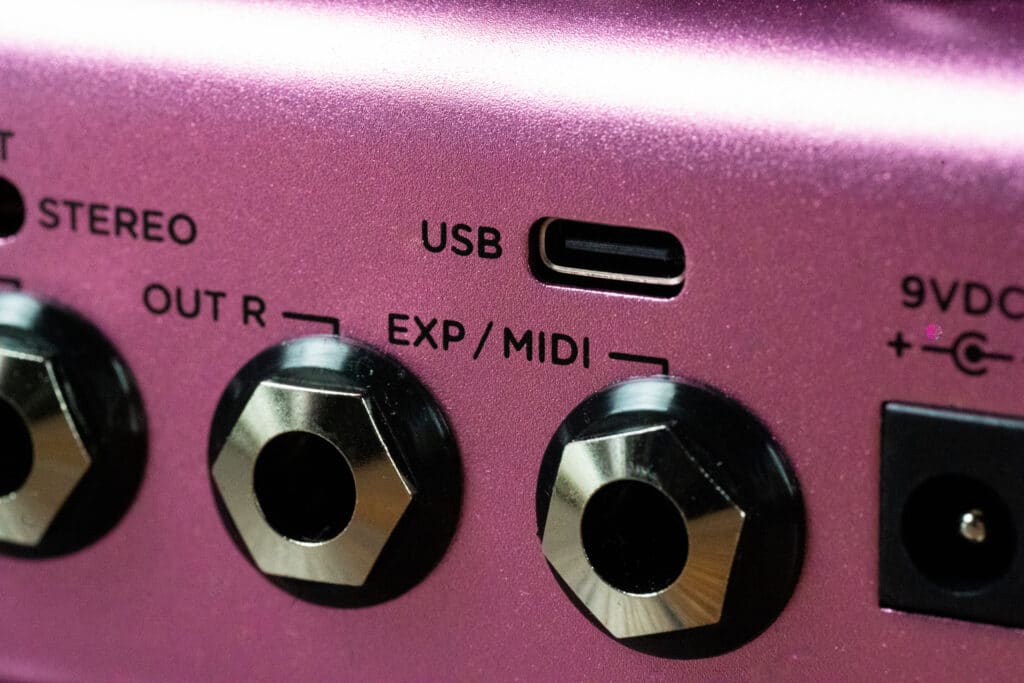
MIDI
Full MIDI implementation means you can control just about every switch, knob, and setting remotely by sending MIDI commands from your controller or DAW via DIG’s EXP/MIDI jack or USB-C connection.
Delay time can be synchronized via MIDI Clock Sync, and the sync setting can be saved for each preset.
300 MIDI preset locations are available for loading and saving your favorite settings.
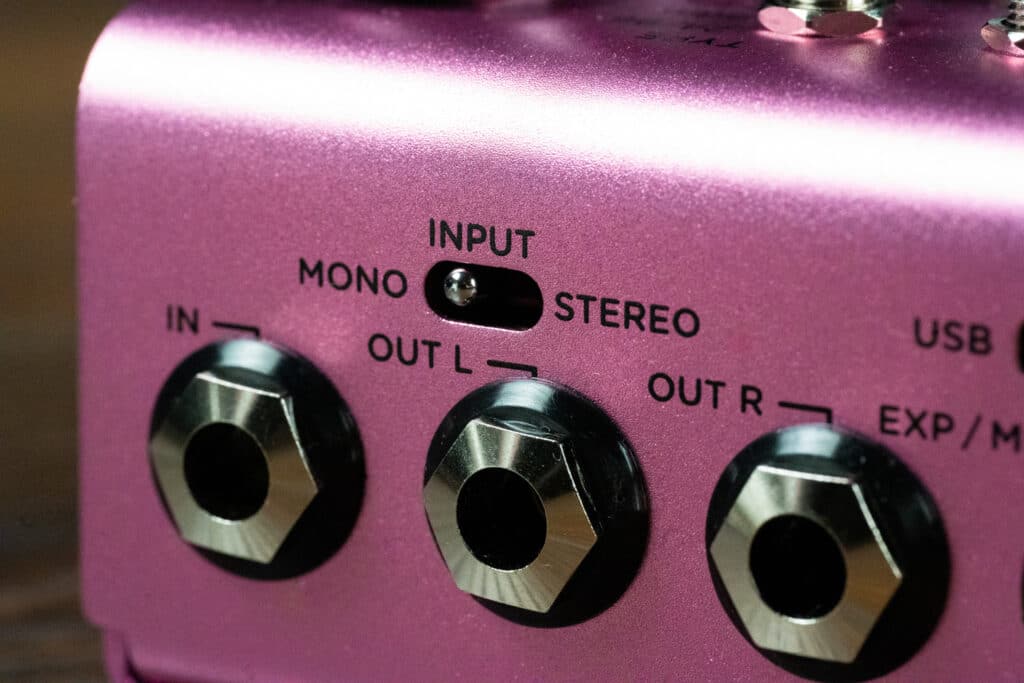
Hardware Improvements
A premium analog JFET input circuit ensures superb responsiveness to your playing, and you can select mono or stereo input with the flick of a rear panel switch.
All this, plus a new ARM DSP chip provides more processing power for every sonic nuance, with less energy consumption on your pedalboard.

Tone Knob
This powerful control sets the feedback filter response for tailoring the sound of your echoes. Fast and intuitive to use, it is actually two filters on one control: Turn left for high cut and right for low cut, or set at 12 o’clock for a flat response.
Audio Examples
Sound Design
 Don’t all digital delays sound the same? What gives a digital delay its own unique personality?
Digital conversion technologies in the late 70s were advancing rapidly, and clever electronics designers were on a quest to squeeze out the best possible performance specs, with fidelity not possible from tape or analog circuits. Their imaginative solutions to the limitations of the conversion process resulted in delays that possessed some unintended, unique characteristics. DIG accurately and beautifully reveals their individual personalities.
ADM – A one bit, high sample rate conversion technique that evolved from telecommunications voice coding. The conversion and supporting signal conditioning, limiting, and pre-emphasis/deemphasis create a percussive wide-band delay that adds more character when input dynamics increase.
12 bit – A 12 bit, 32kHz PCM conversion made possible by monolithic IC chips developed in the late ’70s. Pre-emphasis/de-emphasis and companding combine with the converters to produce a warm delay with a dimensional sense.
24/96 – A clean, high-resolution, high-bandwidth delay with a hint of dynamics that allow the delay to sit nicely with the analog dry signal. 24 bit resolution and a 96kHz sampling rate ensure uncolored, artifact-free repeats.
Don’t all digital delays sound the same? What gives a digital delay its own unique personality?
Digital conversion technologies in the late 70s were advancing rapidly, and clever electronics designers were on a quest to squeeze out the best possible performance specs, with fidelity not possible from tape or analog circuits. Their imaginative solutions to the limitations of the conversion process resulted in delays that possessed some unintended, unique characteristics. DIG accurately and beautifully reveals their individual personalities.
ADM – A one bit, high sample rate conversion technique that evolved from telecommunications voice coding. The conversion and supporting signal conditioning, limiting, and pre-emphasis/deemphasis create a percussive wide-band delay that adds more character when input dynamics increase.
12 bit – A 12 bit, 32kHz PCM conversion made possible by monolithic IC chips developed in the late ’70s. Pre-emphasis/de-emphasis and companding combine with the converters to produce a warm delay with a dimensional sense.
24/96 – A clean, high-resolution, high-bandwidth delay with a hint of dynamics that allow the delay to sit nicely with the analog dry signal. 24 bit resolution and a 96kHz sampling rate ensure uncolored, artifact-free repeats. At the heart of DIG are two simultaneous, integrated delay machines.
Delay 1 is the master delay — Its free-running delay time allows you to easily dial in delays from 20ms to 1.6s with the Time knob or Tap Tempo switch.
Longer delay times lend themselves to more ambient soundscapes while doubling and slapback effects can be achieved at short delay times.
Delay 2 follows as the companion delay. A dedicated subdivision control determines the ratio between the two delays with one of five rhythmic subdivisions: triplet, eighth note, dotted eighth note, dotted quarter note, and the golden ratio.
Don’t want your delays to be synchronized?
DIG’s Free Mode secondary function disables time sync and subdivisions between Delay 1 and Delay 2, giving the Time 2 knob a full delay range from 20ms to 1.6s. This lets you use both of DIG’s delays as truly independent, standalone delay machines.
At the heart of DIG are two simultaneous, integrated delay machines.
Delay 1 is the master delay — Its free-running delay time allows you to easily dial in delays from 20ms to 1.6s with the Time knob or Tap Tempo switch.
Longer delay times lend themselves to more ambient soundscapes while doubling and slapback effects can be achieved at short delay times.
Delay 2 follows as the companion delay. A dedicated subdivision control determines the ratio between the two delays with one of five rhythmic subdivisions: triplet, eighth note, dotted eighth note, dotted quarter note, and the golden ratio.
Don’t want your delays to be synchronized?
DIG’s Free Mode secondary function disables time sync and subdivisions between Delay 1 and Delay 2, giving the Time 2 knob a full delay range from 20ms to 1.6s. This lets you use both of DIG’s delays as truly independent, standalone delay machines. Series, Parallel, Ping Pong — Set up your two delays in one of three configurations.
Series is like setting up pedals in a chain on your board one after the other, with Delay 2 feeding into Delay 1.
Parallel will orient your delay lines so that they remain independent — Delay 1 in the left channel and Delay 2 in the right channel. If used in mono, both delays are heard at once without feeding into each other.
With Ping Pong, each delay acts as a ping pong delay, interacting together when both Mix knobs are turned up. Use in stereo for captivating back and forth rhythms.
Series, Parallel, Ping Pong — Set up your two delays in one of three configurations.
Series is like setting up pedals in a chain on your board one after the other, with Delay 2 feeding into Delay 1.
Parallel will orient your delay lines so that they remain independent — Delay 1 in the left channel and Delay 2 in the right channel. If used in mono, both delays are heard at once without feeding into each other.
With Ping Pong, each delay acts as a ping pong delay, interacting together when both Mix knobs are turned up. Use in stereo for captivating back and forth rhythms.Total Control.

DIG features a full suite of practical delay controls to dial in your dream tone, from the studio to the stage.
Two dedicated Mix controls let you determine just the right amount of wet to dry signal, from no delays at all, to 50/50 at 3 o’clock, all the way to full wet, delay-only tones, for both of DIG’s two delay machines.
DIG’s Repeats knob adjusts the repeat amount for both delays. From singular repeats for short slapback delays, all the way to infinitely repeating echoes at its max position.
Want a different amount of repeats for Delay 2? DIG features a secondary function to choose between individually dialing in Delay 2’s repeats amount, or having them controlled by the main Repeats knob.
DIG also features two individual Time knobs for each of its two delay machines, giving you access to everything from super snappy quick delays, to long, spacey delays. Time 2 can be used to sync Delay 2’s delay time to one of 5 different delay subdivisions, or used in Free Mode to independently dial in your desired delay time.
Delay time for Delay 1 can also be set with the Tap Tempo switch for easy on-the-fly tempo adjustments.
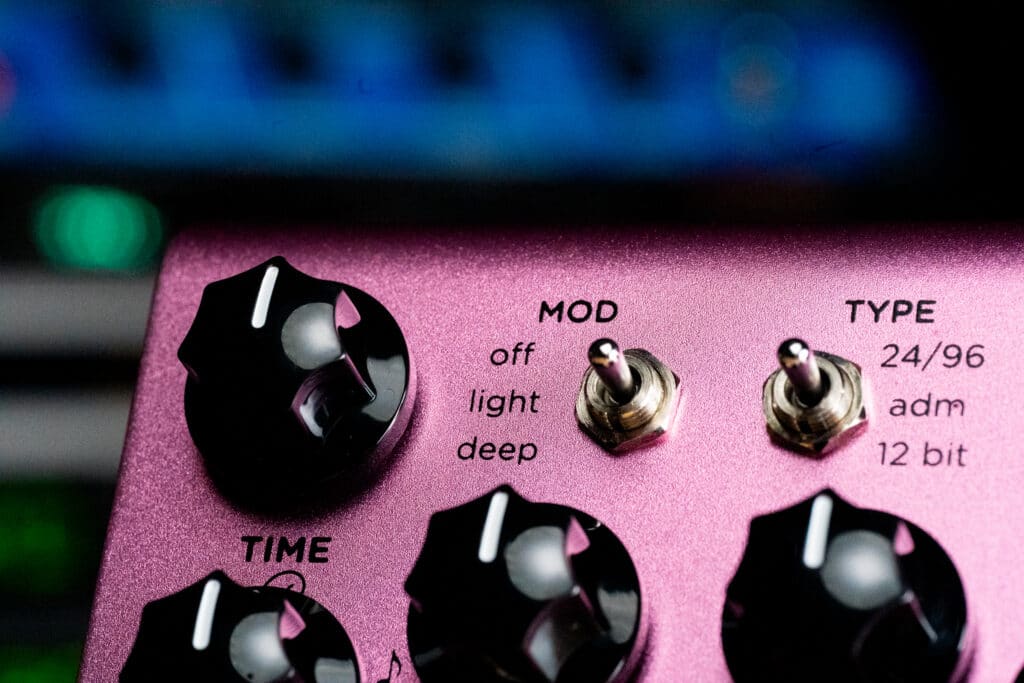 Need to add some extra character to your repeats? DIG features three levels of delay line modulation, perfect for adding richness and dimension to your delays.
Choose between no modulation to hear only your delays, light mod for subtle modulation, or deep mod for lush, thick increased modulation.
Need to add some extra character to your repeats? DIG features three levels of delay line modulation, perfect for adding richness and dimension to your delays.
Choose between no modulation to hear only your delays, light mod for subtle modulation, or deep mod for lush, thick increased modulation. Our new generation of DIG lets you fine tune your delay tone with a dedicated Tone control that adjusts the feedback filter response.
Turn Tone to the left to cut out high frequencies for dark, washed out repeats, set it to noon for a neutral, flat response, or go past that for sparkly, shiny delays with reduced low frequencies.
Our new generation of DIG lets you fine tune your delay tone with a dedicated Tone control that adjusts the feedback filter response.
Turn Tone to the left to cut out high frequencies for dark, washed out repeats, set it to noon for a neutral, flat response, or go past that for sparkly, shiny delays with reduced low frequencies.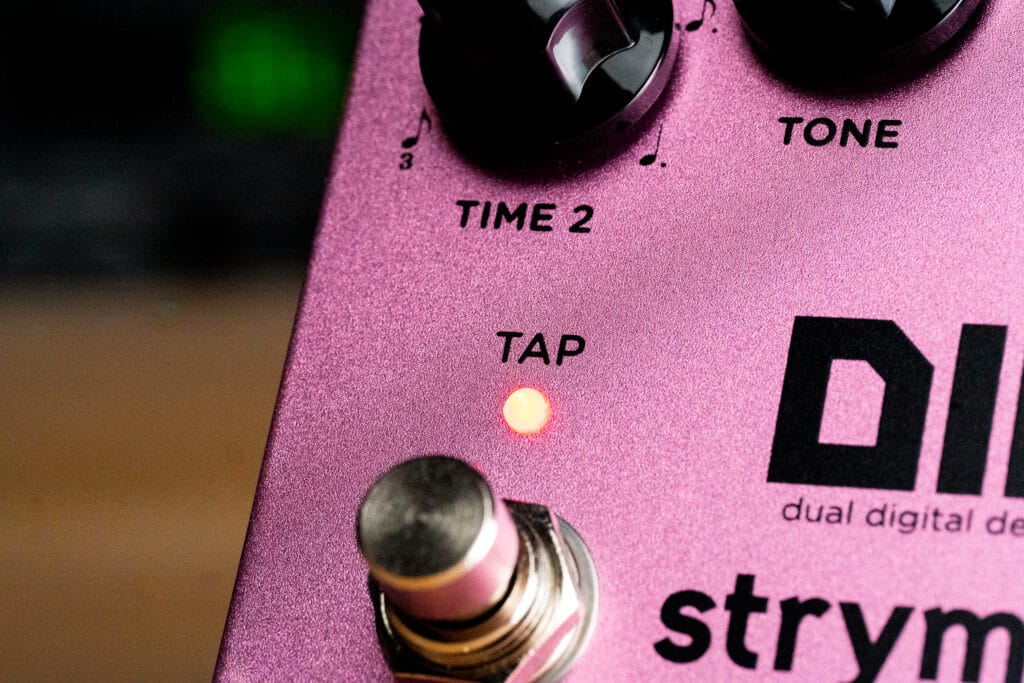 Want to infinitely let your repeats echo on and on to create rhythmic soundscapes at the press of a button?
Holding down the TAP footswitch enables circular repeats, where both delay lines maintain a static volume and repeat continuously until the TAP footswitch is disengaged. At this point, all previous settings will be restored.
Want to infinitely let your repeats echo on and on to create rhythmic soundscapes at the press of a button?
Holding down the TAP footswitch enables circular repeats, where both delay lines maintain a static volume and repeat continuously until the TAP footswitch is disengaged. At this point, all previous settings will be restored.Features
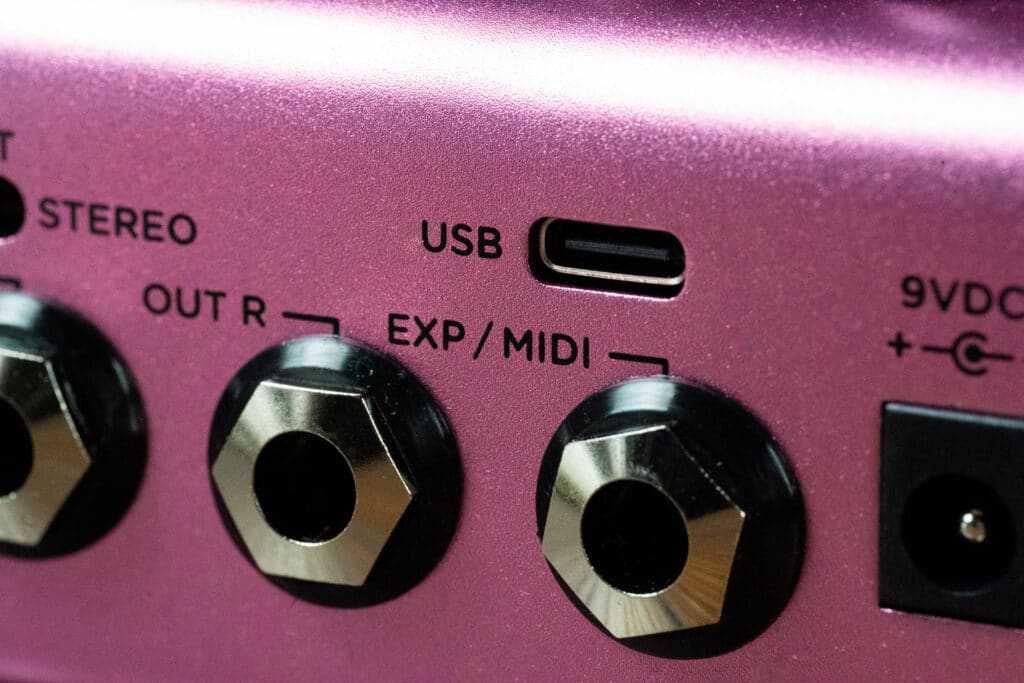 Our new generation of DIG features full MIDI implementation, allowing you to control just about every switch, knob, and setting remotely by sending MIDI commands from your controller or DAW via DIG EXP/MIDI jack or USB-C connection. Delay times can be synchronized via MIDI Clock Sync, and the sync setting can be saved for each preset. 300 MIDI preset locations are available for loading and saving your favorite settings.
Remotely bypass or engage the pedal, sync delay time changes along with your tracks, automate knob adjustments, recall unique presets for each song on your setlist — the possibilities with MIDI are limitless.
Our new generation of DIG features full MIDI implementation, allowing you to control just about every switch, knob, and setting remotely by sending MIDI commands from your controller or DAW via DIG EXP/MIDI jack or USB-C connection. Delay times can be synchronized via MIDI Clock Sync, and the sync setting can be saved for each preset. 300 MIDI preset locations are available for loading and saving your favorite settings.
Remotely bypass or engage the pedal, sync delay time changes along with your tracks, automate knob adjustments, recall unique presets for each song on your setlist — the possibilities with MIDI are limitless.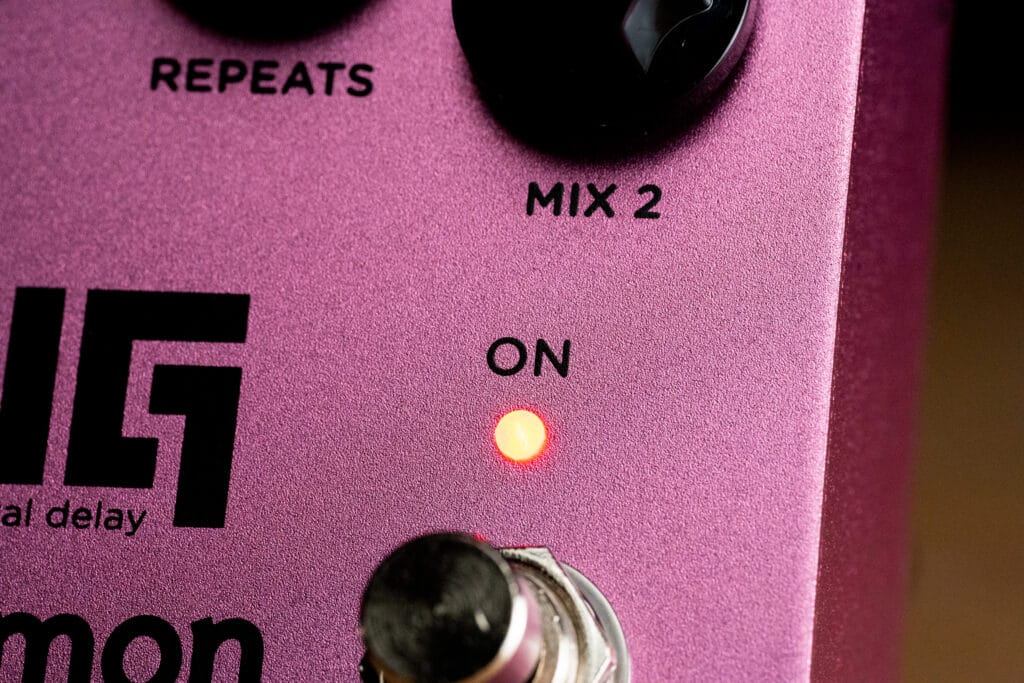 DIG lets you choose electromechanical relay switched true bypass for a 100% untouched, unprocessed signal when the pedal is bypassed (this is the default setting), or you can opt for our premium quality buffered bypass that conditions your signal to preserve its integrity by preventing the high end roll-off that can happen due to longer cable runs.
DIG lets you choose electromechanical relay switched true bypass for a 100% untouched, unprocessed signal when the pedal is bypassed (this is the default setting), or you can opt for our premium quality buffered bypass that conditions your signal to preserve its integrity by preventing the high end roll-off that can happen due to longer cable runs. Uncompromised dynamics and feel. Exceptional touch sensitivity and responsiveness. DIG feels just as good as it sounds, thanks to a high impedance ultra-low noise discrete Class A JFET preamp input.
Uncompromised dynamics and feel. Exceptional touch sensitivity and responsiveness. DIG feels just as good as it sounds, thanks to a high impedance ultra-low noise discrete Class A JFET preamp input.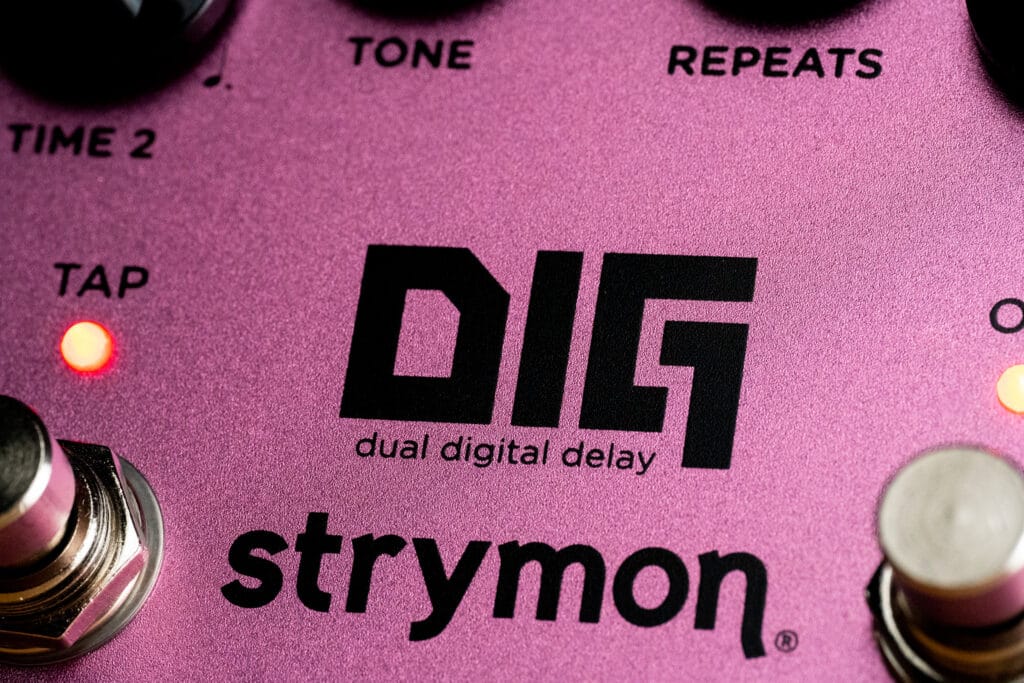 Pedals aren’t just for guitarists. DIG’s adjustable input signal level makes it a versatile tool for endless applications from the studio to the stage.
By setting DIG to line level input mode, you get 10dB of added headroom, allowing you to use DIG with bass guitars with active pickups, synthesizers, keyboards, effects loops, and more.
Pedals aren’t just for guitarists. DIG’s adjustable input signal level makes it a versatile tool for endless applications from the studio to the stage.
By setting DIG to line level input mode, you get 10dB of added headroom, allowing you to use DIG with bass guitars with active pickups, synthesizers, keyboards, effects loops, and more. No need to make compromises when it comes to signal routing or pedal placement — DIG features full stereo in/out capabilities.
A single TRS input jack allows DIG to keep its compact form factor while giving you the option to use a stereo input signal. A dedicated rear panel Input switch allows you to easily set DIG for operation with a stereo (TRS) or mono (standard TS) input source. Low impedance dual TS output jacks let you use DIG as a stereo effect.
No need to make compromises when it comes to signal routing or pedal placement — DIG features full stereo in/out capabilities.
A single TRS input jack allows DIG to keep its compact form factor while giving you the option to use a stereo input signal. A dedicated rear panel Input switch allows you to easily set DIG for operation with a stereo (TRS) or mono (standard TS) input source. Low impedance dual TS output jacks let you use DIG as a stereo effect. Significant developments in mobile phones and computers have led to an evolution in technology that now allows our pedals to perform more simultaneous processes with less power draw than ever before. That means more processing power for every sonic nuance with less power consumption on your pedal board.
Significant developments in mobile phones and computers have led to an evolution in technology that now allows our pedals to perform more simultaneous processes with less power draw than ever before. That means more processing power for every sonic nuance with less power consumption on your pedal board.Controls & Routing
Hover over the interactive dots to learn more about DIG’s knobs, switches, and inputs/outputs.
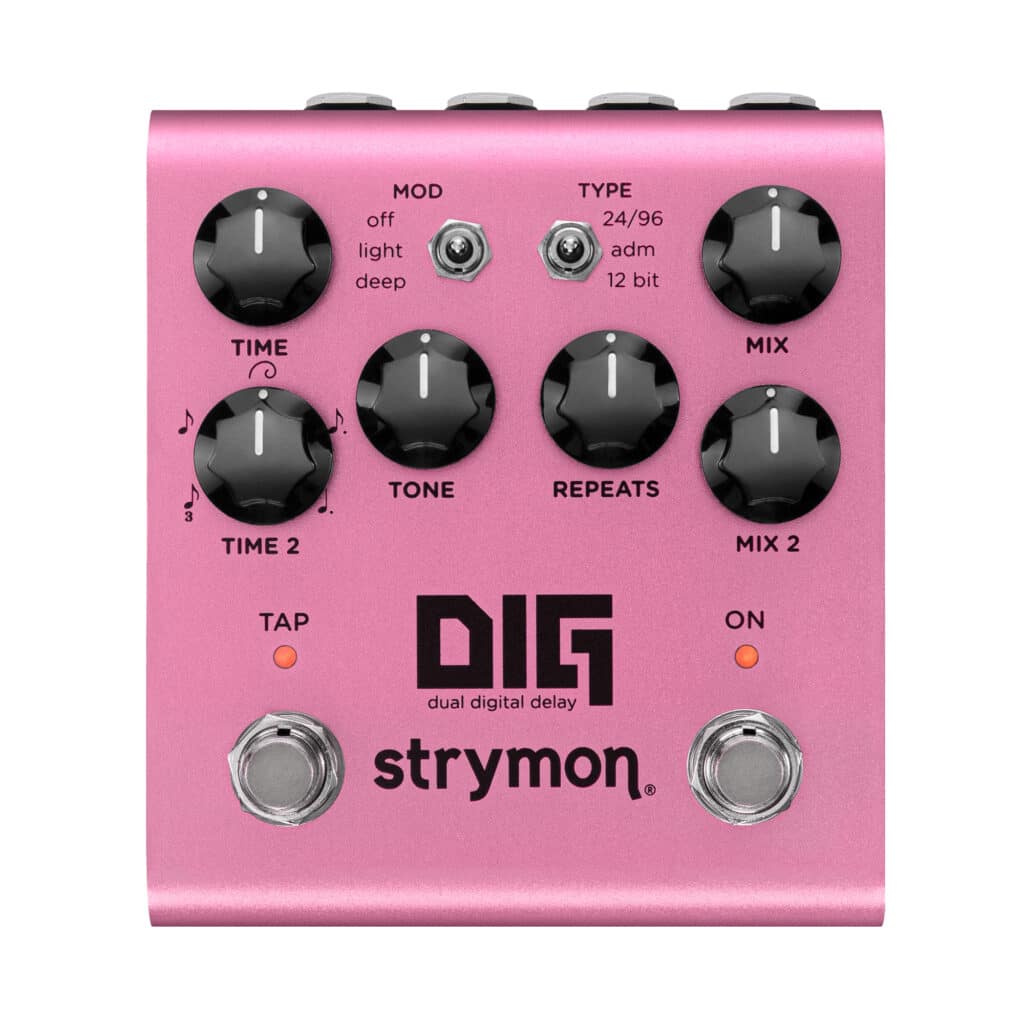
Sets the feedback filter response. Turn left for high cut and right for low cut. 12 o’clock is flat response.
Controls wet/dry mix for Delay 2. 3 o’clock is 50/50 mix.
Used to set Configuration Mode Live Edit function.
Sets the rhythmic subdivision relationship between Delay 1 and Delay 2.
Used to access Sync/Free Mode Live Edit function.
Adjusts the number of repeats for both delays.
Used to access Delay 2 Repeats Live Edit function.
Controls the delay time for Delay 1. Acts as a master time control for both delays.
Used to access Delay 1 Subdivision Live Edit function.
Controls wet/dry mix for Delay 1. 3 o’clock is 50/50 mix.
Used to access Dry Level Live Edit function.
Changes the digital delay character.
24/96: modern, clean delay with subtle dynamics
adm: early ‘80s adaptive delta modulation process provides snappy, percussive delays
12 bit: mid 80’s 12-bit conversion method yields slightly darker and warmer delays
Sets the amount of delay line modulation.
off: no modulation
light: subtle modulation
deep: thick, rich modulation
Tap to set the master delay time. The TAP LED flashes red to indicate the tempo.
Hold footswitch to engage circular repeats.
Engages the effect. Red LED indicates the effect is engaged.
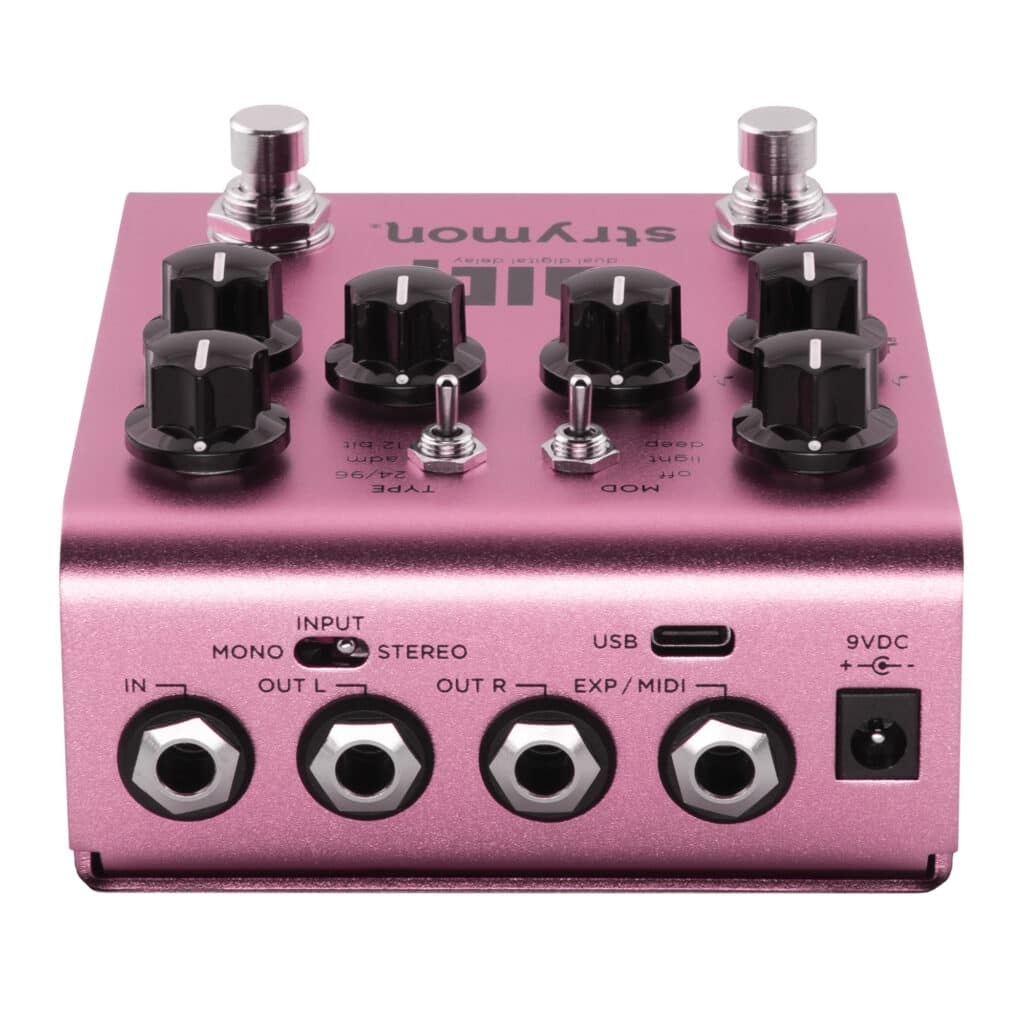
High impedance, ultra low-noise, discrete Class A JFET preamp input. TRS adapter cable required for stereo input signal.
Low impedance stereo audio signal output. Use Out L for mono output.
Low impedance stereo audio signal output.
Use Out L and Out R for stereo output.
Multifunction communication jack for external control of DIG's features and functions.
Use a standard TRS expression pedal for continuous control over the knobs of the pedal.
See complete User Manual for details about configuring for MIDI communication or accessories such as Strymon Conduit, MultiSwitch Plus, and MiniSwitch.
Use the included power supply or an adapter with the following rating:
9VDC, center negative, 300mA minimum.
Computer connection for controlling via MIDI and firmware updates.
Select input signal type.
MONO: Use with a mono input signal. Output is stereo.
STEREO: Use with a stereo input signal. Output is stereo.
Specs
- High impedance ultra low-noise discrete Class A JFET TRS stereo input.
- Low impedance independent TS stereo outputs.
- Expression pedal input allows the connection of a TRS expression pedal, MiniSwitch, MultiSwitch Plus, or TRS MIDI connection.
- USB jack for controlling via MIDI from a computer or for performing firmware updates.
- Dedicated Tap Tempo & On/Off footswitches
- Premium JFET analog front end
- Ultra low noise, high performance 24-bit 96kHz A/D and D/A converters provide uncompromising audio quality
- 520MHz ARM Superscalar processor
- 32-bit floating point processing
- 20Hz to 20kHz frequency response
- Audio Input Impedance: 1M Ohm
- Audio Output Impedance: 100 Ohm
- Strong and lightweight pink aluminum chassis
- 9V DC power supply included
- Power requirements: maximum 9 volts DC center-negative, with a minimum of 300mA of current
- 4.5” deep (11.43 cm) x 4” wide (10.16 cm) x 2.4” tall (6.1 cm)
- Designed and built in the USA








